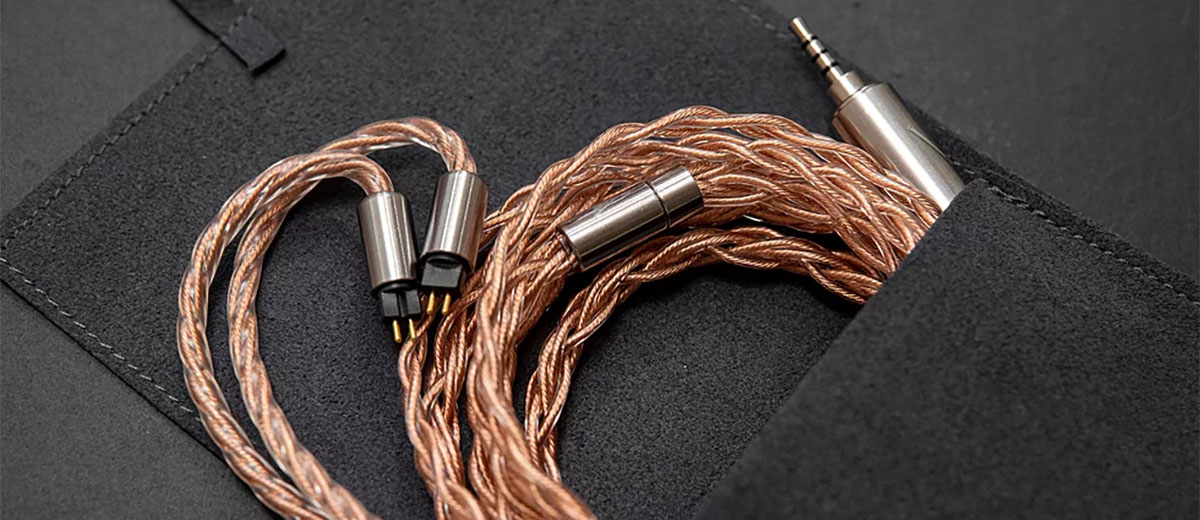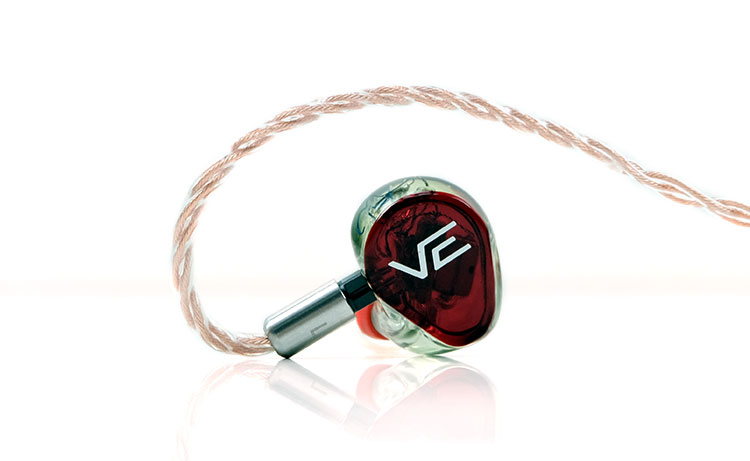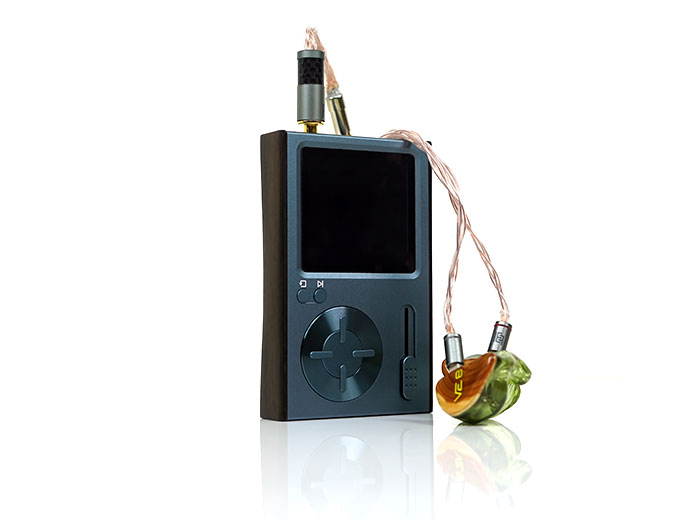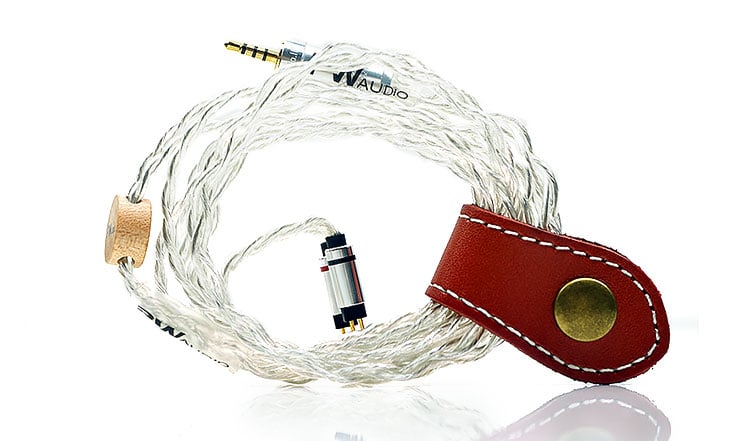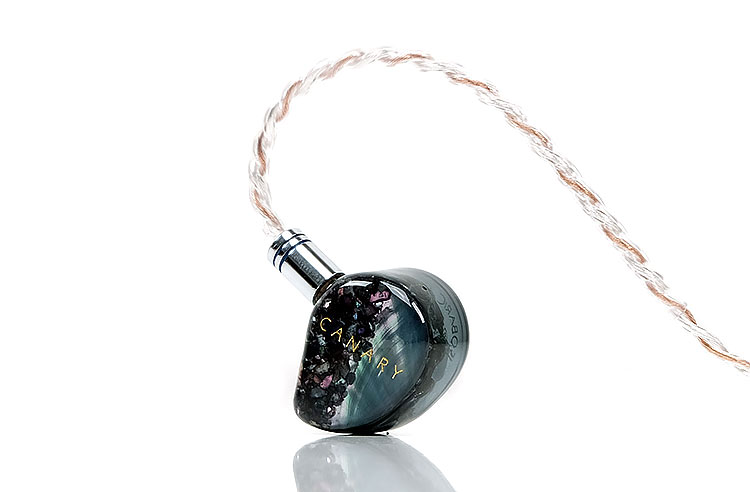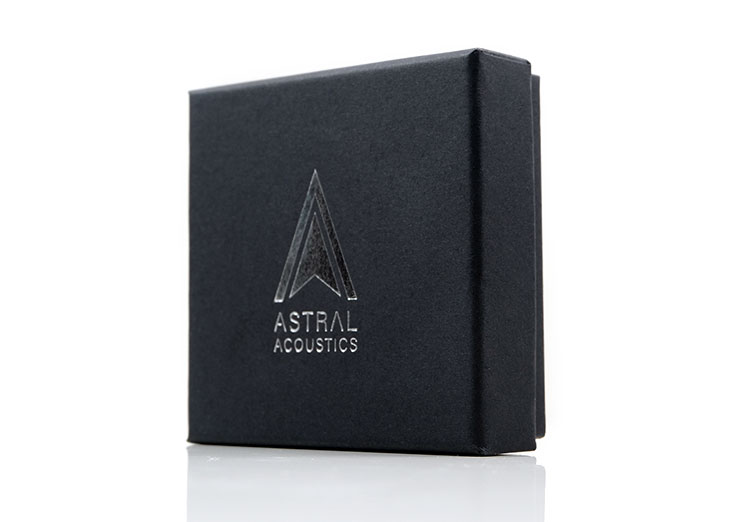Synergy
I found Stage 1 to pair best with monitors with a good emphasis on imaging combined with excellent midrange resolution. Monitors such as the Vision Ears EVE20 and Lime Ears Pneuma gelled very nicely with Stage 1.
The EVE20 primarily for its articulate BA configuration and natural tone and the Pneuma for its excellent imaging and staging qualities. Stage 1 will not add a huge amount of bass weight to either monitor but what it will do is enhance the instrumental separation and improve the low-end definition over stock 4-wire options.
It can also help with monitors that might have a slightly edgier top-end or upper mids, for example, the tia Trio from 64 Audio. Now, normally I find this a smooth monitor but then normally I do pair this with cables that retain that character.
Stage 1 injects a sweet but precise tone into the tia Trio rather than a thick and rounded quality from bassier pairings such as the PW Audio No 10, (see in more detail below in our select comparisons). At the same time, the resulting clarity and slightly lighter touch in the tia Trio tone avoids sounding harsh or brittle.
Our final pairing was the Andromeda 2020 which I found to be quite balanced actually. Neither too sharp, excellent midrange clarity and instrumental separation, and a relatively neutral bass performance. Personally, I prefer a thicker tone from the Andromeda 2020 and a strong a fundamental as possible so this pairing is more in the ‘high-fidelity’ category, i.e. articulate.
Select Comparisons
(All comparisons were completed with the iBasso DX300 source, 64 Audio’s tia Trio, and Vision Ear’s EVE20)
Astral Acoustics Taurus
$240
Technical
This is the first and original cable from Astral Acoustics that we reviewed back in 2018. Although both it and Stage 1 are copper cables quite a lot has changed since then. Taurus uses a higher 7n purity level of copper compared to the 6N OCC copper inside Stage 1. However, the gauge is smaller at 28AWG compared to 25.5AWG.
The geometry on the Taurus is also a bit simple with a Litz Type 1 design as opposed to the more complex Type 4 construction inside Stage 1. All the wires of the Taurus are wrapped in a custom-made Oyaide PET jacket whereas Stage 1 uses a PVC jacket.
Design
A very different aesthetic despite both using a copper wire with translucent jackets. The PET of the Taurus is not quite as clear as the PVC of Stage 1 so you get a slightly plasticky veil over the copper. This dulls the wire colors a little whereas the Stage 1 aesthetic has a much stronger copper color shining through.
The Taurus is a lot lighter but the braiding is quite stretched compared to the tighter short throw of Stage 1. Thus, it feels a little stiffer creating that flyaway nature I mentioned before as well as a few minor memory retentive curls.
Microphonics on the Taurus is just as good as Stage 1 when in use and being 4-wire and a smaller gauge it is much lighter on the ear compared to the heavier 6-wire Stage 1.
The Taurus uses Eidolic Premier connectors which I am actually a big fan of as they are very small, lightweight, and solid in construction. You will find the Stage 1 barrel to be a fair bit heavier though the new stainless steel splitter has a much lower profile than the larger Taurus design.
Performance
There is a nuanced difference in the timbre between these two but a big leap on the technical side. First, the dynamic range. Not so much in terms of one sounding infinitely louder than the other but rather the level of separation and the blacker background.
Stage 1 paired with the tia Trio delivers a stronger stereo imaging experience with better headroom from what seems to be an improved treble response over the Taurus.
I suspect the Taurus is not able to pull as much quality high-frequency resolution and top-end presence from the Trio compared to Stage 1 so it lacks a little comparative air with less separation in the mids.
As a result, the Taurus sounds a bit more one-dimensional, especially through the mids with vocal imaging sounding a bit flat in comparison. Stage 1 provides a lot more space to deliver vocals, perhaps benefiting from the perceived improvement in height.
The better treble presence also shakes up the timbre a little with both the EVE20 and tia Trio sounding a little cleaner than the Taurus. Now, the Taurus can sound more euphonic but I did notice a little more sibilance and percussion splash edginess in the tia Trio whereas the Stage 1 pairing felt calmer, more controlled, and thus the more accurate sounding of the two pairings.
PW Audio No. 10
HKD$1480
Technical
The No 10 was our Bang for Buck cable for 2020 and is another one that tinkers with gauge sizing as opposed to upping the wire count to maximize performance. Though never formally declared we do believe this is a single crystal SPC wire as opposed to Stage 1’s official 6N OCC copper design. The older No.5 was their single crystal OCC copper design.
Inside the standard No. 10 uses a 4-wire instead of the 6 inside Stage 1, but with a slightly larger 24AWG gauge compared to Stage 1’s 25.5AWG. You can order the No. 10 in an 8wire format from the Likes of Music Sanctuary if you prefer but not in a 6-wire build.
Both use Litz geometries though once again, PW Audio’s exact Type is unknown whereas Stage 1 is declared as having a Type 4 configuration. Undeclared could well mean customized or proprietary rather than Type 1 etc.
Design
The aesthetics of these cables contrast sharply with the No. 10 radiant in silver and the Stage 1 a solid rich copper hue. Both cables come in similar 1.2m lengths though for Stage 1 you can opt for a custom design up to 3m with additional fees.
Both cables have PVC jackets, however, the NO.10 material seems to be softer but thicker so it has more girth to it than Stage 1. Both have a short-throw braiding finish, however, the thicker PVC on the No.10 also gives it a slightly looser feel in its braiding whereas Stage 1 is quite tight a bit more disciplined.
Memory hook molding is a little more malleable on the No 10, mainly due to the 4-wire instead of the 6-wireStage 1 finish reducing the thickness at the connector and that softer PVC jacket. Both have impressively low to dead quiet microphonics performance when in use.
PW Audio does offer a wider range of termination choices such as IPX, Fitear, and QDC as well as the standard 2-pin and MMCX. Astra Acoustics keeps the options more limited to the most widely requested 2-pin 0.78mm and MMCX connectors.
The jack barrel is cleaner finished on Stage 1 with less of a DIY feel to the strain relief which overmolds on the No 10 jack. Both barrels are nicely crafted but the No. 10 barrel is a bit lighter than the stainless steel Stage 1 version.
Performance
These two cables complement rather than compete with each other in terms of performance. Using the Lotoo Touch and the 64 Audio tia Trio, the No.10 pairing brings more of a weighted thicker texture sound to the table compared to the more neutral and slightly lighter touch of Stage 1.
Listening bias is thus pulled down a little with the No 10 with the bass to mid-bass and vocals getting a broader more rounded tone. Both these aspects get pushed further forward also with a more relaxed treble response using the tia Trio. Not that the treble is attenuated or lacking in resolution but rather it is not overly forward sounding.
Stage 1 does it differently. The low-end is more neutral though still slightly even-harmonic with more space afforded for the mids and treble to shine. It has a quickness about it with the EVE20 compared to the more languid No. 10 with a bit more sparkle in the treble and a more accurate harmonic balance for vocals.
In terms of staging dimensions, the No. 10 is the deeper and more powerful sounding pairing. It does wonderfully well teasing out dynamic drive texture and a full forward-sounding vocal range. Stage 1, on the other hand, has a wider stereo imaging presentation for the mids, a bit more separation, and sounds airier with more articulation on the highs.
Null Audio Hakone
$299
Though not given an individual review we have the Hakone here as the stock cable of AAW’s flagship Canary monitor. Null Audio does sell it separately at $299 as part of their Symphonym range and it is one of their more popular aftermarket cables.
Technical
The Hakone is a cryogenic treated UPOCC monocrystalline silver/copper conductor rather than an SPC so if you stare carefully at the design you will see the copper and silver in separate wires rather than a single blended wire. Stage 1 retains an entirely copper element using 6N OCC copper with no silver.
The Hakone also opts for a slightly larger gauge than the industry standard at 24AWG which is also a bit bigger than the Stage 1 25.5AWG rating. However, the Hakone stays at 4-wire compared to the stock 6-wire of the Astral Acoustics design. You can get a ‘Herringbone’ 8-wire braid for the Hakone but that will cost you an additional $180.
Both use Litz geometries though the type differs with Stage 1 using Type 4 and the Hakone using Type 5. All wires in the Hakone are wrapped in PVD deposits to prevent any oxidization hue but with both being Litz neither should suffer from that issue.
Design
In terms of aesthetics, the Hakone has that silver and copper color combo which creates a little bit of contrast in color hue. Whereas Stage 1 is all copper and slightly darker because of it.
Despite the larger 24AWG, the Hakone is still a smaller cable in terms of girth. It is relatively lightweight compared to the thicker and heavier Stage 1 6-wire build. You cannot get around physics really unless you go sub-20AWG for your wire. Both have the same ultra-low microphonics performance when in use.
Both have the same short-throw braiding technique though you can get tighter with that 4-wire Hakone build. The weight bias on the Hakone is more to that heavy chrome and carbon fiber printed aluminum barrel with a very satisfying but solid matching chin cinch.
Stage 1 is missing a cinch but the stainless steel splitter is smaller and much lighter with its bias more to the heavier SS jack barrel. The Hakone does have a matching carbon fiber printed jack barrel but it is lighter and smaller than the Stage 1 version. Connectors on the Hakone also have a lower profile.
Options are much more comprehensive on the Null Audio website with up to 26 termination choices, 9 jack choices, and 4 splitter barrel options. Astra Acoustics can give you 3 jack and 2 termination choices at the checkout currently.
Performance
The Hakone has more of a classic SPC tonal quality to it with a bit more fizz in the treble and a punchy low-end. Whereas Stage 1 offers more warmth on the low-end, the better bass body, and a midrange timbre that errs to the smoother and sweeter side.
The Hakone midrange is slightly cleaner with less body when paired with the tia Trio but also slightly edgier in the timbre for me. Particularly with the tia Trio highs which can be harder-edged coming down into the percussion and higher-pitched vocal timbre. Stage 1 is smoother for me for vocals, benefitting from a bit more warmth and not such an aggressive treble presence.
In terms of dynamic range, Stage 1 does have an edge and you can pick that up in how well defined and vivid sounding instrumental notes are, particularly on the low-end of both the EVE20 and tia Trio. Both have solid black backgrounds but the Hakone might be too calm and lean across the mids by comparison.
That means for staging, Stage 1 is deeper sounding, a little more holographic and physical through the mids, but more relaxed on the highs. The Hakone tends to tease out a bit more sparkle on the treble with a more neutral midrange and a punchy but slightly lighter low-end.
Our Verdict
It is really nice to see an affordable 6-wire aftermarket IEM cable finally out in the market. As a previous hardcore 8-wire believer the switch to a slightly bigger gauge and dropping to 6-wire has consistently surprised me. Stage 1 does nothing to offset that growing belief you can get better performances without having to wear an Anaconda around your neck.
This is an attractively built copper cable with a superbly low-microphonic performance. It has a performance synergy with our tested monitors that is natural and sweet in tone, articulate and airy with a nice focus on producing a clear sounding staging quality.
It is not for bassheads, it is not a rich tonal character nor will it reinvent the wheel for power if your monitor is not a hugely bassy monitor, to begin with. There is more than a hint of a purist in Stage 1 but with enough warmth to make it very easy to listen to.
Astral Acoustics Stage 1 Specifications
- Wire count: 6 wires
- Material: 25.5awg Multi-sized Stranding Copper Litz
- Jacket: PVC
- Connector options: 2-pin, MMCX
- Jack options: 3.5mm TRS, 2.5mm TRRS, 4.4mm TRRRS
- Length: 120cm

